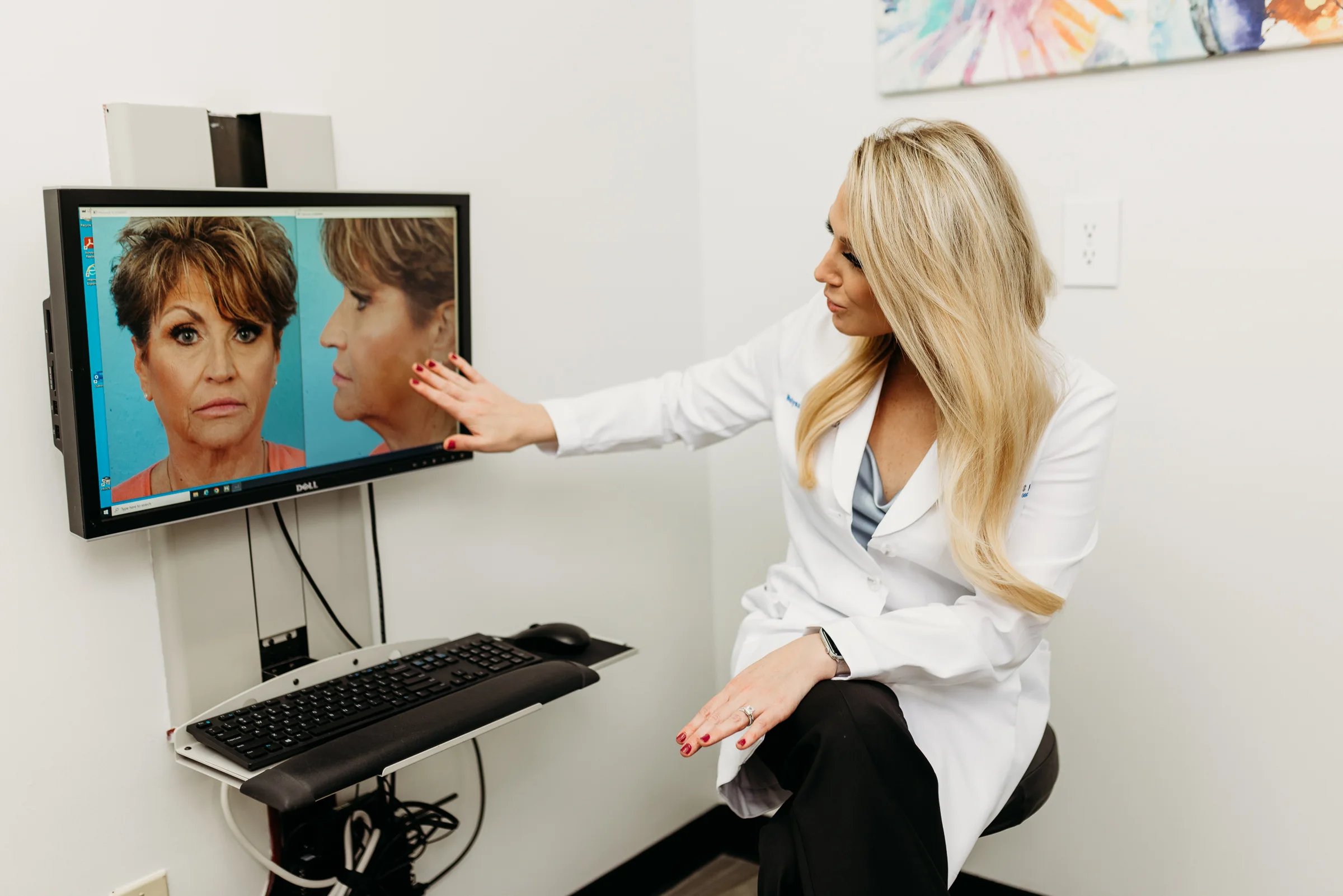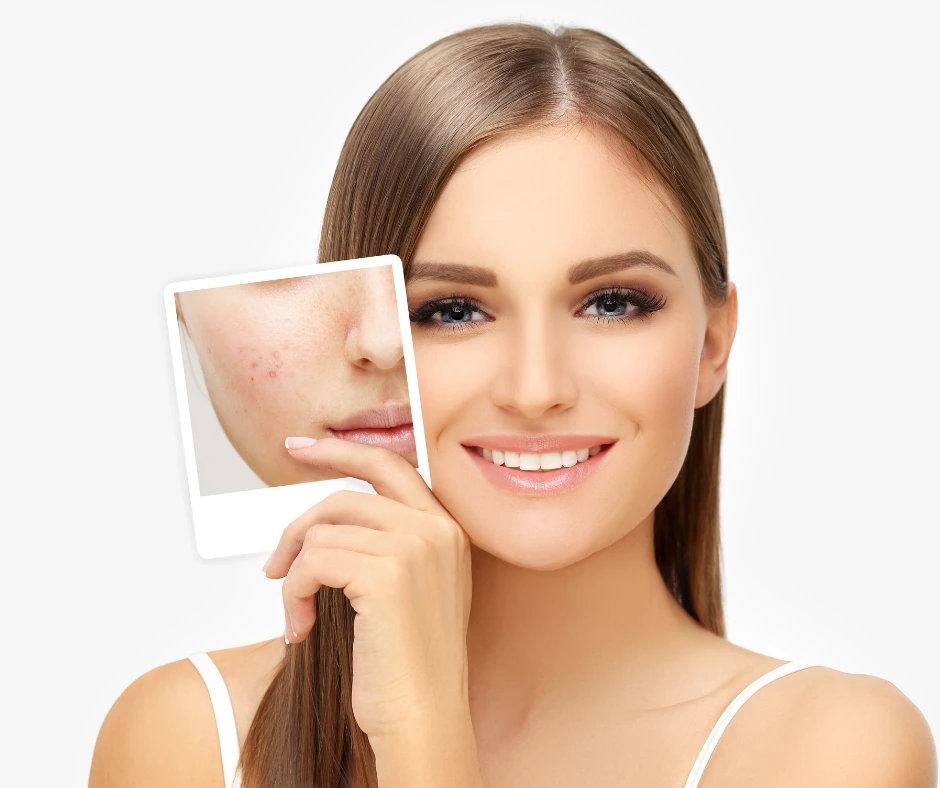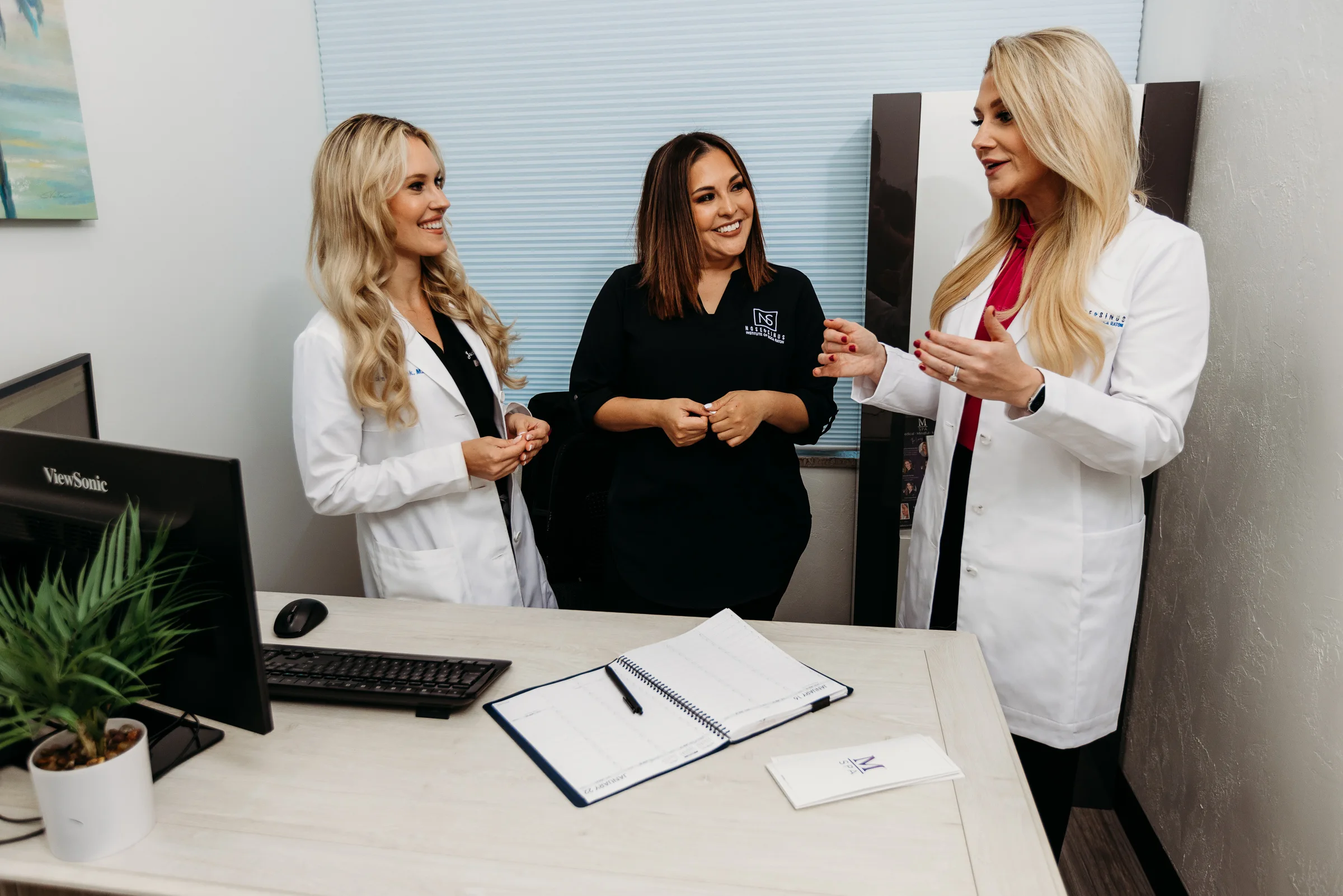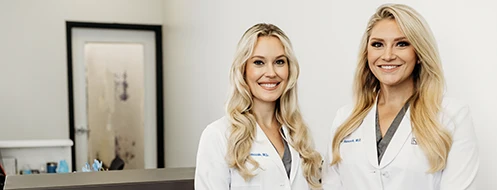

Feeling insecure, confused, or hesitant about your nose’s appearance? On this page, our board-certified facial plastic surgeons help you find out if your nose tip is bulbous, and what treatment options are best suited for this cosmetic concern.
A bulbous nose is defined by an enlarged, rounded nasal tip that lacks definition and disrupts facial harmony. This appearance is usually caused by broad or misshapen nasal tip cartilage, thick skin, or tissue changes from conditions such as rhinophyma associated with rosacea. The result is a tip that appears wider, fuller, or disproportionate to other facial features. At the Facial Institute of Boca Raton, our board-certified facial plastic surgeons Dr. Melyssa Hancock and Dr. Jaclyn Klimczack specialize in precise tip refinement, addressing both cartilage structure and skin quality to create a balanced, natural-looking result personalized to fit each patient’s anatomy.


Bulbous noses vary by cause and anatomy. Knowing the type helps us choose the right approach for a successful bulbous nose job or tip rhinoplasty.
Tip appears rounded due to wide or weak lower lateral cartilages; often improved with cartilage reshaping and suturing techniques.
Thick or oily skin, including rhiniphyma sometimes related to rosacea, masks the tip definition and may need soft-tissue reduction or resurfacing.
Both broad cartilage and thick skin contribute; it requires a combined surgical and soft-tissue approach for the best long-term results.
Develops after long-term inflammation (e.g., rosacea); treatment may include medical therapy plus surgical refinement
A rounded, wide, or puffy nasal tip with reduced tip definition and possible visible asymmetry; may affect self-esteem and facial harmony.
Mild rounding or fullness at the tip, subtle loss of definition when viewed front-on.
You will notice an increased tip width, thicker skin, and in rosacea-related cases, vascular changes or nodular enlargement.
Bulbous nose tips arise from three main factors: underlying cartilage shape, skin thickness/quality, and inflammatory tissue enlargement (e.g., rhinophyma). Often, more than one factor is present.
Naturally wide or rounded lower lateral cartilages, inherited from family traits, often create a bulbous nose tip that requires precise surgical reshaping for lasting refinement.
A thick dermis with active sebaceous glands can obscure nasal tip definition, requiring personalized surgical techniques and, in some cases, skin-focused treatments to enhance refinement.
Chronic inflammation, such as rosacea, may cause rhinophyma, leading to skin thickening and bulbous contour changes that benefit from combined medical management and surgical correction.


Bulbous nose treatment is personalized to your anatomy and goals: from focused tip rhinoplasty (bulbous nose job) to skin resurfacing or rhinophyma management. Non-surgical options are limited for true bulbous tips.
Surgical refinement reshapes and narrows the lower lateral cartilages (cephalic trims, suture techniques, grafting when needed) to create improved tip projection and definition. This is the best and most dramatic way to improve most bulbous nose tips.
When rosacea or tissue hypertrophy is present, treatments such as CO₂ laser resurfacing, dermabrasion, or targeted debulking (electrosurgery/excision) may be combined with rhinoplasty for optimal, durable results.

All procedures carry risks: bleeding, infection, scarring, temporary numbness, asymmetry, breathing changes, and the possibility of revision surgery. Our facial plastic surgeons discuss individualized risk profiles and steps taken to minimize complications and optimize safety.
Most patients experience swelling and mild bruising for 1-2 weeks; visible improvement appears within weeks, but tip refinement continues over months.
If skin procedures (laser or dermabrasion) are combined, additional wound care and topical regimens will be provided. FSIBR’s team offers detailed, personalised recovery plans and follow-up.


At the Facial Institute of Boca Raton, your bulbous nose tip refinement is performed by board-certified facial plastic surgeons who focus exclusively on the face and neck. This depth of specialisation means you benefit from advanced techniques, artistic precision, and experience in addressing functional issues (if exist) during surgery. Whether reshaping broad tip cartilage, addressing skin thickness, or treating rhinophyma, our team designs each surgical plan to suit your individual anatomy and aesthetic goals.
Patients choose FSIBR for our commitment to safety, natural-looking outcomes, and a concierge-level experience that supports you from your first consultation through every stage of recovery.
We welcome patients traveling to Boca Raton. FSIBR provides concierge support for scheduling, virtual pre-op consultations, coordination of local accommodation, and clear post-op instructions for safe travel. Typical out-of-town stays vary by procedure, our team recommends planning for an overnight or short local recovery window and will advise specifics at your consultation.
Surgical tip refinement is intended as a long-term solution. The natural aging process will influence results over the years, but when performed correctly, surgery produces durable and meaningful improvement.
Cosmetic tip refinement is usually considered elective and not covered. If breathing issues are addressed simultaneously, partial coverage may apply, FSIBR’s staff can help verify benefits.
Early changes are visible within weeks, but tip definition matures over 6-12 months as swelling subsides and tissues settle.

Written by Facial Surgery Institute of Boca Raton Medical Experts
